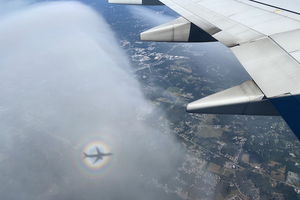GSL Seminar: Commercial-Aircraft-Based Weather Observations for NWP: Data Coverage, Forecast Impacts, and COVID-19

GSL/CIRES scientist Eric James gave a seminar "Commercial-Aircraft-Based Weather Observations for NWP: Data Coverage, Forecast Impacts, and COVID-19."
Click here for a link to the recorded presentation.
Weather observations from commercial aircraft constitute an essential component of the global observing system and have been shown to be the most valuable observation source for short-range numerical weather prediction (NWP) systems over North America. However, the distribution of aircraft observations is highly irregular in space and time. In this study, we summarize the recent state of aircraft observation coverage over the globe and provide an updated quantification of its impact upon short-range NWP forecast skill. Aircraft observation coverage is most dense over the contiguous United States and Europe, with secondary maxima in East Asia and Australia/New Zealand. As of late November 2019, 665 airports around the world had at least one daily ascent or descent profile observation; 400 of these come from North American or European airports. Flight reductions related to the COVID-19 pandemic led to a 75% reduction in aircraft observations globally during mid-2020, with varied degrees of regional recovery into 2021. A set of data denial experiments with the latest version of the Rapid Refresh NWP system for recent winter and summer periods quantifies the statistically significant positive forecast impacts of assimilating aircraft observations. A special additional experiment excluding approximately 80% of aircraft observations reveals a reduction in forecast skill for both summer and winter amounting to 30%–60% of the degradation seen when all aircraft observations are excluded. These results represent an approximate quantification of the NWP impact of COVID-19-related commercial flight reductions, demonstrating that regional NWP guidance is degraded as a result of the decreased number of aircraft observations.
